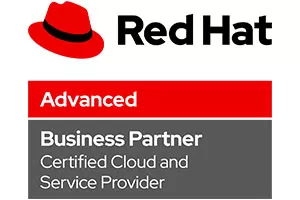
cloud adoption
Does Reaching the Cloud Look diffcult?
Make the journey feel seamless and adopt cloud technologies with fewer headaches when you partner with a global MSP who helps businesses gain better IT environments.
Cloud Adoption Simplified.
To compete in today’s competitive markets, organisations must have a robust cloud strategy.
Using private and public clouds helps enterprises scale, be more agile, increase revenue and achieve business goals.
Some organisations are still evaluating use of cloud resources for core production while others are fully committed, and challenges differ along the journey.
What’s Holding You Back?
Don’t miss the moment to innovation. There’s no single secret when it comes to seamless cloud adoption.
But having the right IT partner and expertise helps.
Get in touch with our specialists and let’s have a conversation about your cloud adoption challenges.
How Can We Help?
"*" indicates required fields

Common Cloud Adoption Challenges.
#1. Trusting the Cloud.
One of the most commonly cited obstacles to cloud adoption is the perception of a reduced level of security. The reality is that public cloud service providers invest far more in their security than any individual company or government department ever could. If done properly – and that’s crucial – a move to the cloud will probably increase security. Overcoming this challenge is often less about cyber security technology and more about changing corporate culture. Some companies start by migrating a few workloads and monitoring the new environment to build trust in the cloud.
#2. Skills Shortages.
After security, the second highest concern reported in Flexera’s 2022 ‘State of the Cloud’ research report is the lack of skills. It’s difficult for a company to take advantage of cloud serves without access to the right people.
Beyond an intensified and expensive recruitment drive, organisations are addressing the skills shortage through outsourcing specific technology areas to a specialist managed service provider (MSP) like CSI and turning to IT automation tools like Terraform and Red Hat Ansible.
Cloud adoption often goes together with building a DevOps culture with organisations enabling standardised and automated deployment configuration of servers and applications. By building and continually checking systems via Infrastructure as Code (IaC) and automation, IT teams can work smarter, not harder.
#3. Wasted Cloud Spend.
As enterprises increase cloud spend, many are also wasting more and more.
Respondents to the ‘State of the Cloud’ survey estimated that they waste 32% of cloud spend – and this may even be higher as it’s common for organisations to underestimate waste compared to an external audit. It’s more critical than ever to control cost without compromising performance. Application performance management (APM) and application resource management (ARM) can proactively and automatically allocate system resources ensuring optimal performance and availability.
By reducing unnecessary use of resources in real-time not only saves costs, but also improves the long-term the energy consumption profile in the data centre. And with sustainability being factored into purchasing decisions this could make the difference to a prospective customer.
#4. Vendor lock-in.
The fear of vendor lock-in can also slow down cloud adoption. Organisations are concerned about being tied to a single provider even if more favourable prices become available in another cloud. Lock-in can be avoided by following a hybrid multicloud approach distributing workloads across several clouds including private platforms. This is made feasible by ensuring portability and interoperability through a cloud-native application architecture of independent microservices and use of containers. This decouples development and deployment allowing for continuous integration and continuous delivery.
Recommended Topics for Cloud Adoption Projects
Cloud Strategy Consulting
Confidently navigate the cloud in way that fits into your business.
Learn more
Cloud Readiness
Discover, learn, and journey to the cloud without the headache following our guided process.
Learn more
Cloud Migration Services
Seamlessly migrate enterprise data and applications to the cloud.
Learn more
Unlocking Opportunity for our Clients

Financial Services & Insurance
Darlington Building Society
Learn how Darlington adopted the cloud to improve the performance and reliability of their business critical application.

ISV
FNZ
Learn how wealth management leader FNZ delivers fintech apps via Software as a Service model and is automating software testing…

Financial Services & Insurance
Fleet Mortgages
Learn how Fleet Mortgages achieved a flexible IT environment that allows new offerings to get to market quickly and cost-effectively.



